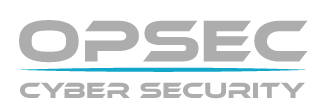1965 Cryptanalysis Training Workbook Released by the NSA
September 2 2025In the early 1960s, National Security Agency cryptanalyst and cryptanalysis instructor Lambros D. Callimahos coined the term “Stethoscope” to describe a diagnostic computer program used to unravel the internal structure of pre-computer ciphertexts. The term appears in the newly declassified September 1965 document Cryptanalytic Diagnosis with the Aid of a Computer, which compiled 147 listings from this tool for Callimahos’s course, CA-400: NSA Intensive Study Program in General Cryptanalysis.
The listings in the report are printouts from the Stethoscope program, run on the NSA’s Bogart computer, showing statistical and structural data extracted from encrypted messages, but the encrypted messages themselves are not included. They were used in NSA training programs to teach analysts how to interpret ciphertext behavior without seeing the original message.
The listings include elements such as frequency tables, index of coincidence, periodicity tests, bigram/trigram analysis, and columnar and transposition clues. The idea is to give the analyst some clues as to what language is being encoded, what type of cipher system is used, and potential ways to reconstruct plaintext within it.
Bogart was a special-purpose electronic computer tailored specifically for cryptanalytic tasks, such as statistical analysis of cipher texts, pattern recognition, and diagnostic testing, but not decryption per se.
Listings like these were revolutionary. Before computers, cryptanalysts did this type of work manually, painstakingly counting letters and testing hypotheses. Stethoscope automated the grunt work, allowing analysts to focus on interpretation, and cryptanalytical strategy.
These listings were part of the Intensive Study Program in General Cryptanalysis at NSA. Students were trained to interpret listings without seeing the original ciphertext, a method that sharpened their analytical intuitive skills.
Also mentioned in the report is Rob Roy, another NSA diagnostic tool focused on different cryptanalytic tasks, but also producing frequency counts, coincidence indices, and periodicity tests. NSA had a tradition of giving codebreaking tools colorful names—for example, DUENNA, SUPERSCRITCHER, MADAME X, HARVEST, and COPPERHEAD.




